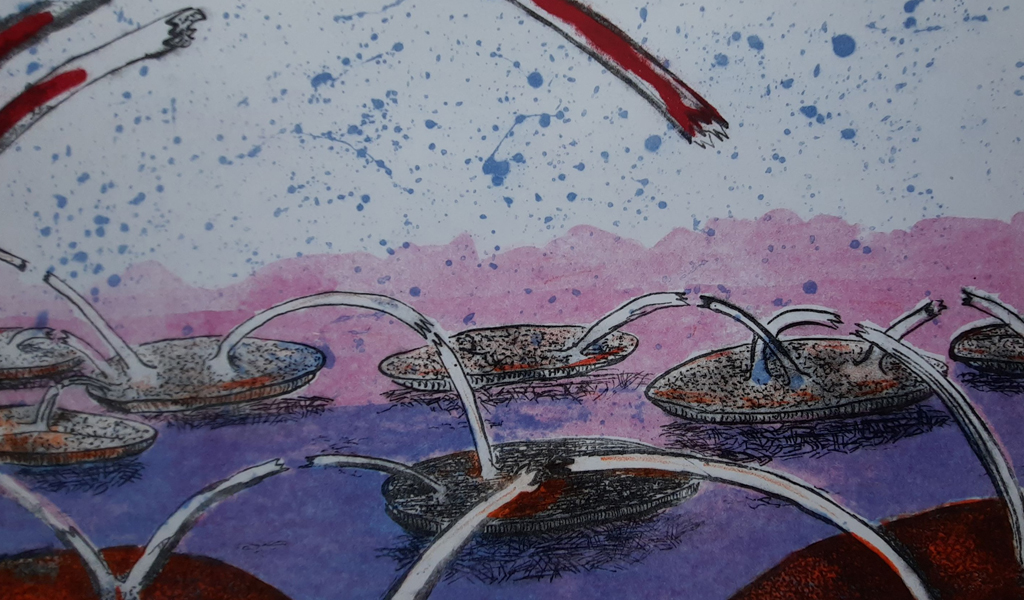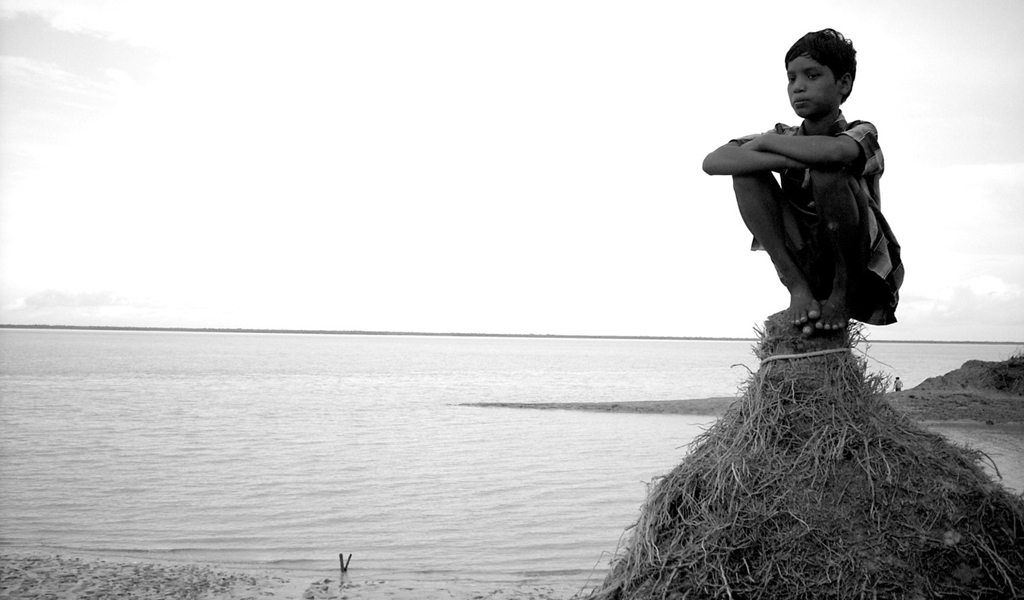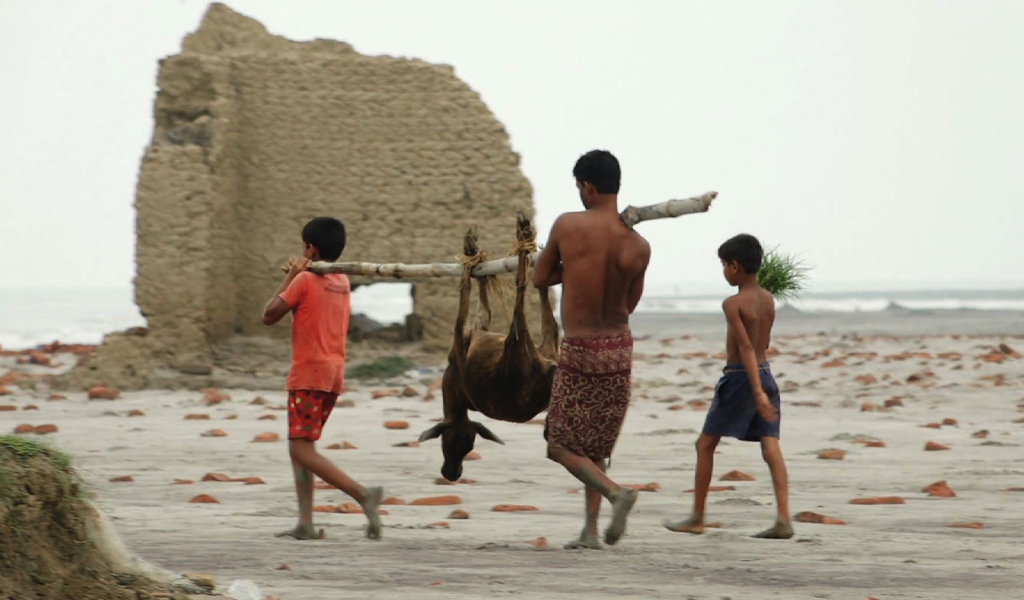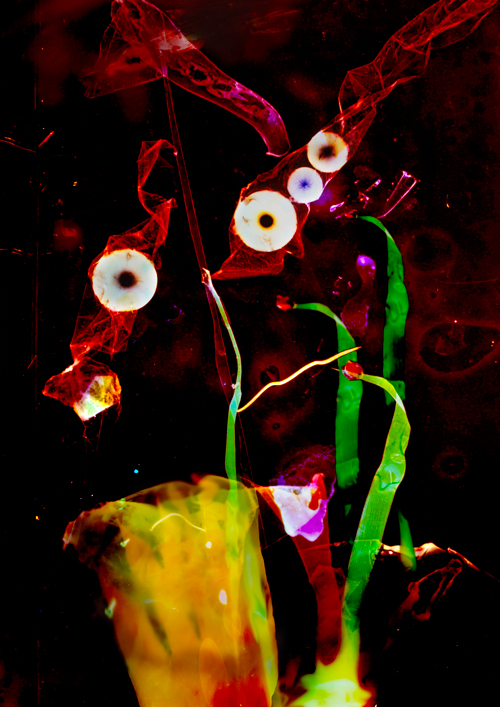There was a period in the late 19th and 20th centuries when the worlds of art and science were seen as opposed to one another. Of course, the distinction is important: works of art are often intended to be ambiguous or ironic, while science is expected to be rigorously true to the data.

Yet there is a creative aspect to the interpretation of data, and research is part of art production. Lately, in response to the rise of AI and the digitalisation of our private and personal lives, the interest in analogue techniques, physicality and materiality has increased. The realm of development studies is no exception to this trend. We seem to be returning to an earlier approach when scientists might also be painters or composers, and artists avidly deployed new discoveries in their work. Both worlds have a fervent commitment to observing, interpreting and representing the world.
The exhibition ‘Observations’ at the Institute of Social Studies curated by scientist-artists Peter van Bergeijk and Pauline Oosterhoff shows the works of Imogen Bellwood-Howard, Peeter Burgeik, Ruben Gowricharn, Helen Hintjens, Vincent Icke, Maartje Raijmakers and myself, Pauline Oosterhoff alias “the inquisitive artist’’. In addition, the exhibition shows the results of arts-based research methods on development topics such as uncertainty, climate change and sexual and reproductive health rights facilitated by Tu Anh Hoang and Shibaji Bose. This unique group of people works across Asia, Africa and Europe. Their scientific backgrounds are in sociology, economics, geography, medical anthropology, political science, astronomy and psychology. Their artistic disciplines also cover a great many grounds, including oil painting, photograms, lithography, sculptures, drawings in ink and pen, modern literature and AI guided design.
Peter Bergeijk/Peeter Bergeik, economist and lithographer, loves the rush of discovering. He uses art and science to see the things that everyone has seen, but in such a way that no-one saw before. His discoveries are the result of repetition, doing the same thing but changing the conditions. The most important lesson is that there is a role for uncertainty, chance and serendipity to play in both formal research strategies and in the strictly prescribed chemical lithographic procedures.
Researcher Shibaji Bose facilitated collaborative research with women and youth residing in the Indian Sundarbans for over a decade. In collaborative photography, the images that should be included by the photographers are identified and selected through discussions with local residential communities. The pictures displayed in ‘Observations’ emerged in the course of social science research projects, and establish how uncertainty and climate change show up in the daily lives of research participants.


My work “Deep Sea Encounter” responds to deep-sea mining. Opponents of deep-sea mining argue that it will destroy fragile, unknown eco-systems, disrupting the lives and reproduction of deep-sea species. These species deserve to be studied to know their benefits and hazards. Proponents of deep-sea mining argue that it can help meet the world’s pressing need for critical minerals for the energy transition. The work explores the uncertainty of entering an unknown ecosystem through colour photograms of translucent sculptures. These colour photograms suggest intrusion, delicate coexistence, and deep-sea: hidden things of our existence.

Deep Sea Encounter 1 (2024), Pauline Oosterhoff Printed colour photogram.
Observation, whether by a single professional researcher or a group of participant observers, is in a sense the fundamental pillar of the bridge that the exhibition aims to show between art and science, acting as a gateway to understanding the world around us.
In both art and science, observation transcends mere seeing; it is a process of discovery, interpretation, and insight that enriches our understanding of ourselves and the universe we inhabit. Through keen observation, artists and scientists alike illuminate the beauty, complexity, and interconnectedness of our existence. Observation fosters curiosity, critical thinking, and a deeper understanding of the world in which we live.
 Deep Sea Encounter 2 (2024), Pauline Oosterhoff. Printed colour photogram.
Deep Sea Encounter 2 (2024), Pauline Oosterhoff. Printed colour photogram.
Art also allows these researchers to show how observations can be contradictory, change when a position changes, or evoke emotions unrelated to the topic studied. ‘Observations’ thus delves into the multifaceted nature of observation, emphasizing its role in discovery and interpretation.
Rather than telling the viewer what to see, this exhibition invites audiences to observe diverse perspectives on thorny development issues and mediums. The exhibition fosters interdisciplinary insights, creativity, and a deeper understanding of the human experience. By bridging art and science, ‘Observations’ encourages holistic comprehension and unlocks new avenues for exploration and expression.
‘Observations’ will open at ISS in the Hague in Autumn 2024.
